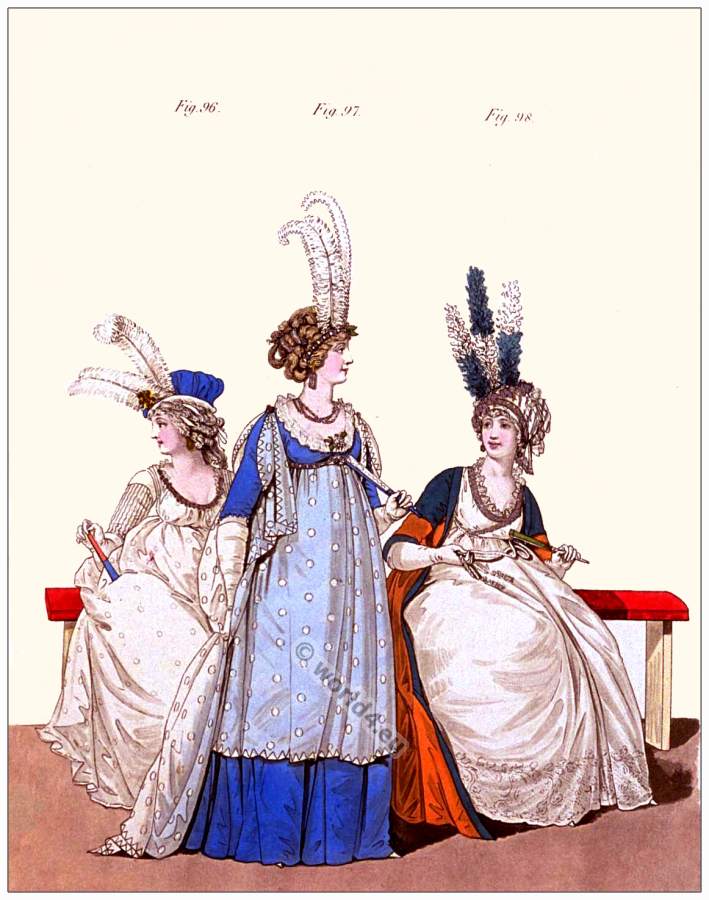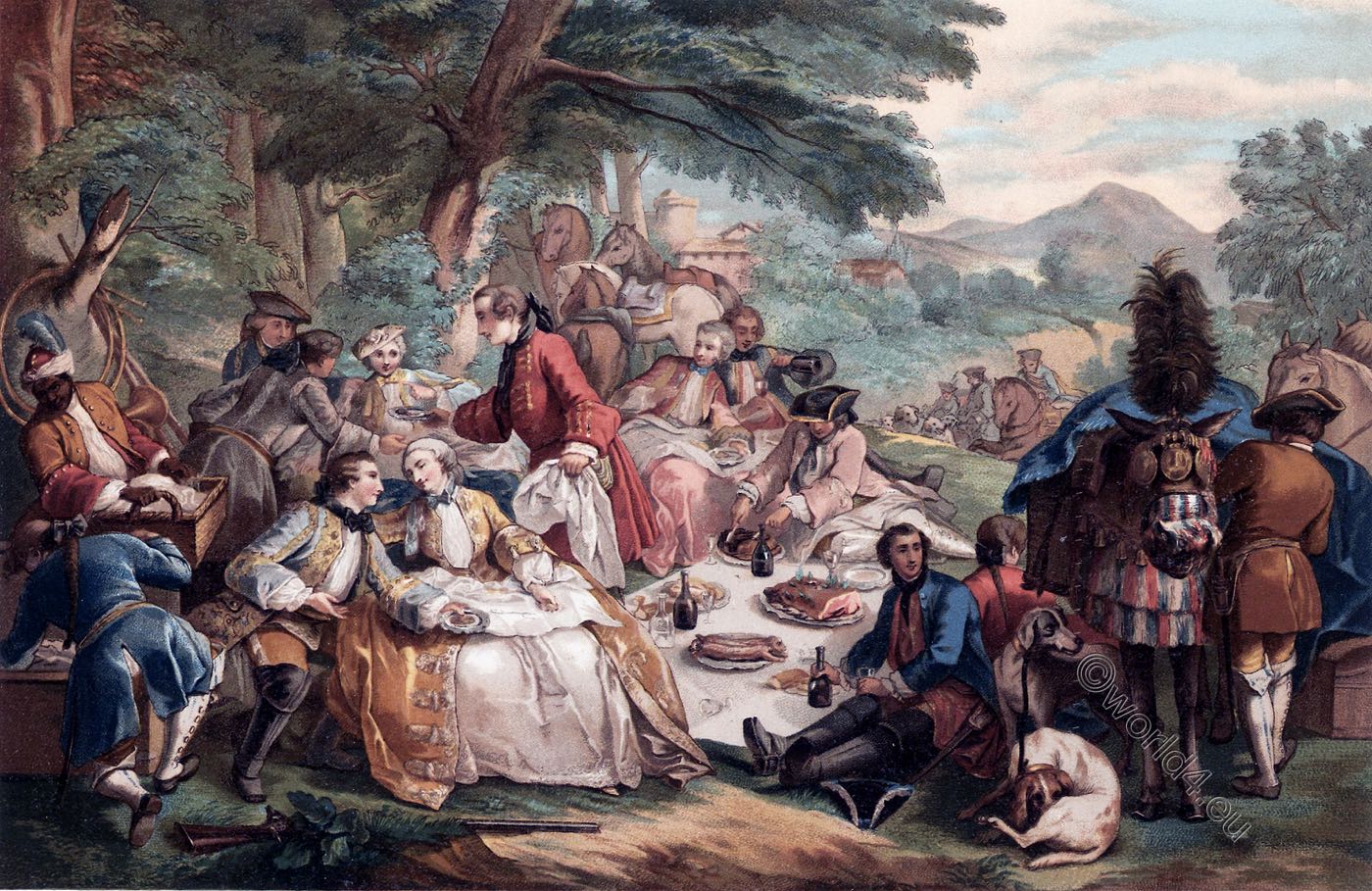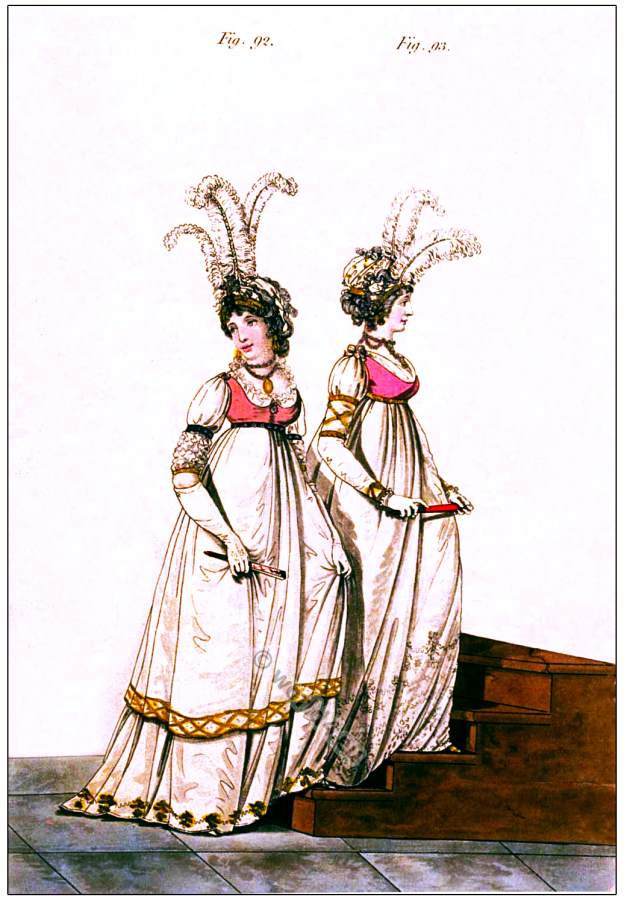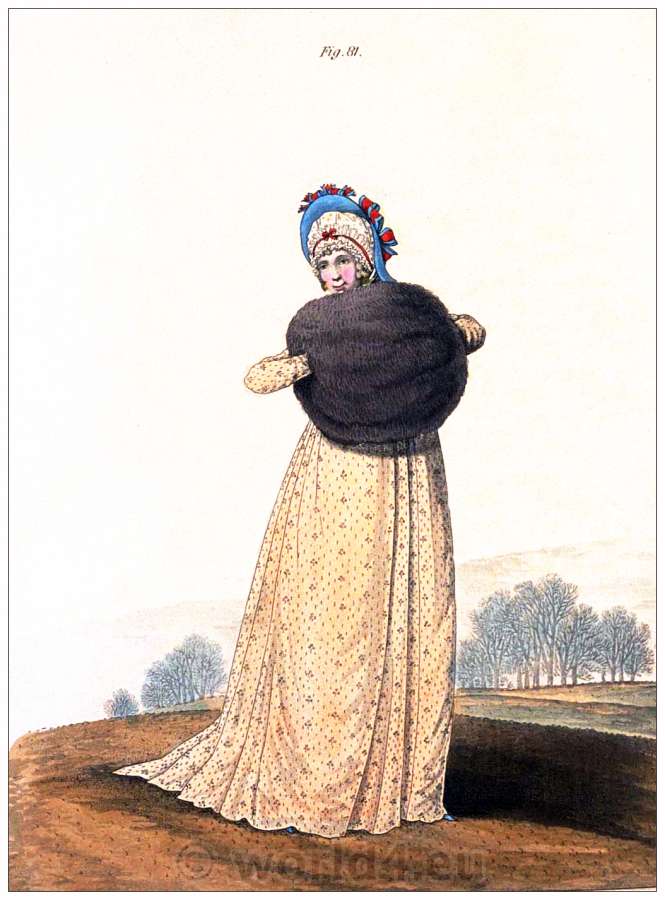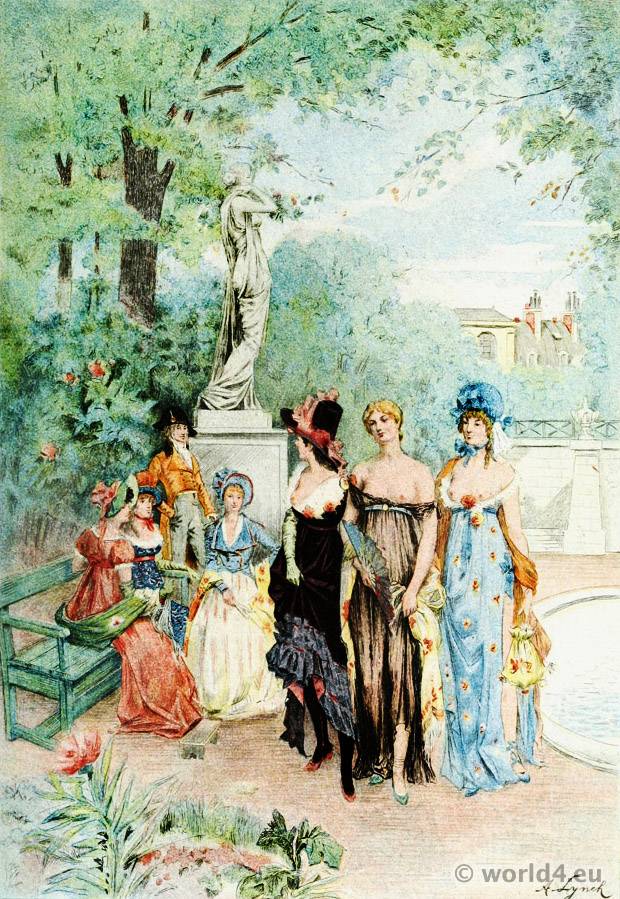The Gallery of Fashion May 1796. England evening dresses for the opera.
FIG. XCVI.
The hair combed plain round the face; two white bands mixed with the curls of the toupee; the curls dressed very tight and smooth, the hind hair turned up short and plain. Small yeoman hat of blue satin, lined with white, and a gold band round the crown; two white ostrich feathers on the left side near the front, fixed with a gold pin, the head representing the Prince’s crest. Round gown of embroidered muslin, trimmed round the neck with lace; short sleeves in half plaits, with white satin épaulettes and cuffs. Pearl necklace and gold ear-rings.
FIG. XCVII.
The hair combed straight round the face; the hind hair turned up in three short loops, returned in ringlets, and crossed with two gold bands. Diamond bandeau and diamond pin on the right side; and on the left a wreath of green leaves intermixed with the hair; two white ostrich feathers in the front. Petticoat of light blue tiffany; body of the same, with short sleeves trimmed with lace. Plaiting of broad lace round the neck. Upper petticoat of white crape, spotted with white satin in chenilles; robe of the same; spotted in the same manner; the whole Vandyke scalloped. Diamond ear-rings, girdle, and clasps. Pearl necklace. White gloves and shoes, richly embroidered in silver.
FIG. XCVIII.
The hair combed plain round the face. Chiffonet of silver muslin, the end trimmed with a silver fringe; the hind hair turned up in two loops; silver bandeau on the left side, and on the right a wreath of honeysuckle silver flowers. Three party-coloured green and white ostrich feathers in the front. Petticoat of white tiffany with a rich embroidered border ; white satin body, embroidered in silver round the neck. Robe of salmon-coloured tiffany; short sleeves; épaulettes, cuffs, and binding of green satin. Full plaiting of broad blonde round the neck. Silk cord and tassels round the waist. Diamond ear-rings. White gloves and shoes.
Source: The Gallery of Fashion Vol. 3. April 1796 To March 1797. Published by Nikolaus von Heideloff, London.

